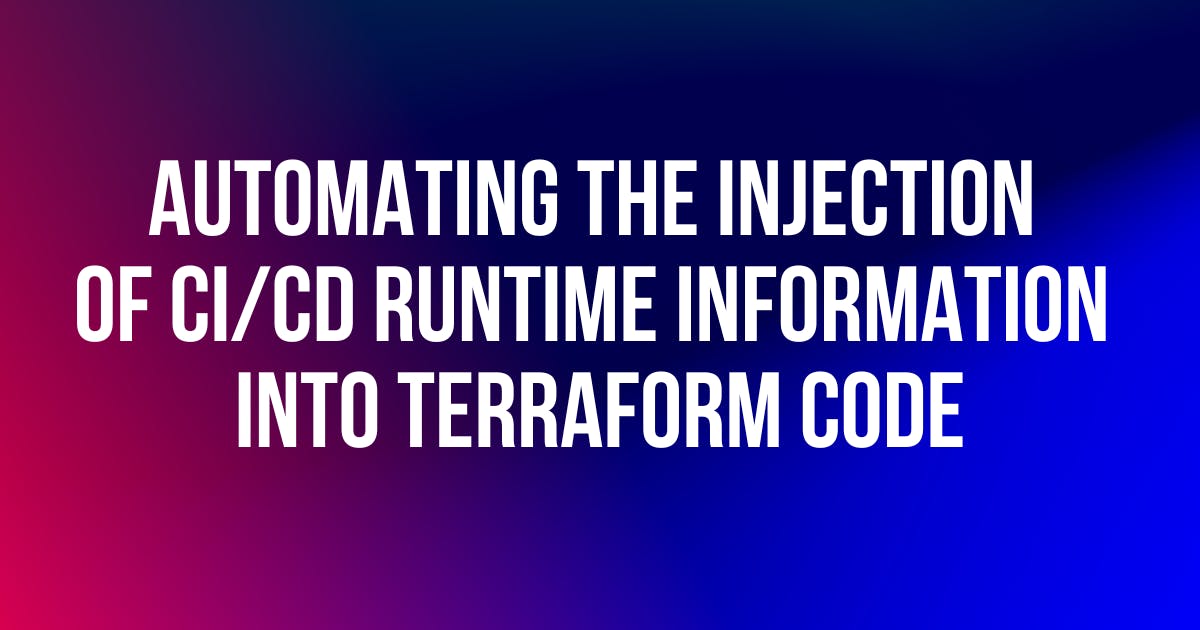- Let's make Cloud ☁️
- Posts
- Let's make Cloud #21: AWS Service Catalog embraces Terraform, capability model vs. maturity model in DevOps adoption, 69 ways to f*** up your deploy
Let's make Cloud #21: AWS Service Catalog embraces Terraform, capability model vs. maturity model in DevOps adoption, 69 ways to f*** up your deploy
AWS Service Catalog embraces Terraform, capability model vs. maturity model in DevOps adoption, 69 ways to f*** up your deploy
Hello CloudMakers!
Today we shall see:
AWS Service Catalog embraces Terraform 🌟
Unlocking DevOps success: capability model vs. maturity model
69 ways to f*** up your deploy
BONUS: how to automate the injection of CI/CD runtime info into your Terraform provider
Enjoy!

Self-Service Provisioning of Terraform Configurations with AWS Service Catalog
AWS has just announced that its Service Catalog now supports Terraform, providing you with an alternative way to define infrastructure as code (IaC) templates. This long-awaited update empowers you to seamlessly integrate your existing Terraform configurations into the Service Catalog, making it more accessible for those who prefer Terraform's capabilities and ease of use.
AWS Service Catalog allows you to create, govern, and manage a catalog of approved IaC templates. For those who were hesitant to adopt AWS Service Catalog due to its reliance on CloudFormation, this is the perfect opportunity to explore the platform and benefit from its centralized portfolio of products.

DevOps uses a capability model, not a maturity model
This very interesting post highlights the differences between maturity models and capability models in the context of DevOps. Maturity models organize processes or activities into a sequence of levels, while capability models describe characteristics in terms of their relationship to outcomes. Maturity models can be rigid and may not work for every organization or address specific challenges, whereas capability models are more dynamic and context-dependent.
The author recommends using capability models over maturity models for DevOps, as they focus on outcome-based measurements, such as DORA metrics, to assess the effectiveness of improvements. Capability models encourage continuous improvement tailored to an organization's unique goals, industry, and scenario, making them a more flexible and effective approach for DevOps implementation.

69 Ways to F*** Up Your Deploy
This post offers a tongue-in-cheek exploration of 69 ways to sabotage your deploys, presenting a collection of common mistakes and pitfalls that can lead to disastrous outcomes in the deployment process. Divided into 10 themes and a section on manual deploys, the "Table of Turmoil" provides a convenient guide for readers to learn from these missteps. The post's goal is to help individuals avoid these mistakes, ultimately leading to a smoother and more successful deployment experience. While the content is presented humorously, the underlying message is to raise awareness about potential issues and encourage better practices in the world of deployment.

BONUS: how to automate the injection of CI/CD runtime info into your Terraform provider
In this article, we explore how to automate the injection of CI/CD runtime info into your Terraform code using the hcledit tool. We walk through a simple script that finds the right spots to insert environment-specific variables and configuration values into your Terraform code. Whether you need to insert 'assume_role' information or default tags like the build number, this script can be adapted to suit your needs.

Thank you for reading my newsletter!
If you liked it, please invite your friends to subscribe!
If you were forwarded this newsletter and liked it, you can subscribe for free here:
Have you read an article you liked and want to share it? Send it to me and you might see it published in this newsletter!
Interested in old issues? You can find them here!



